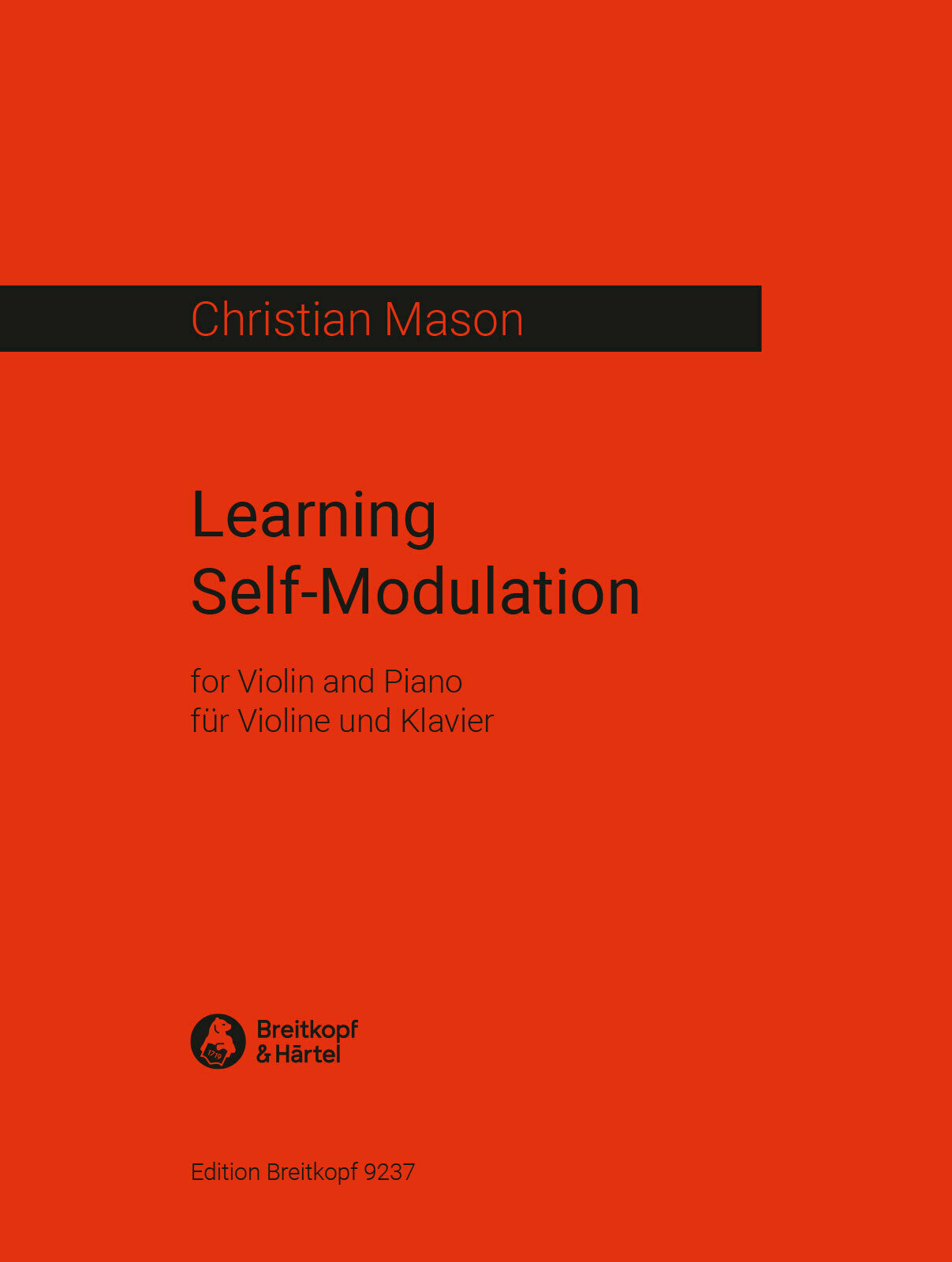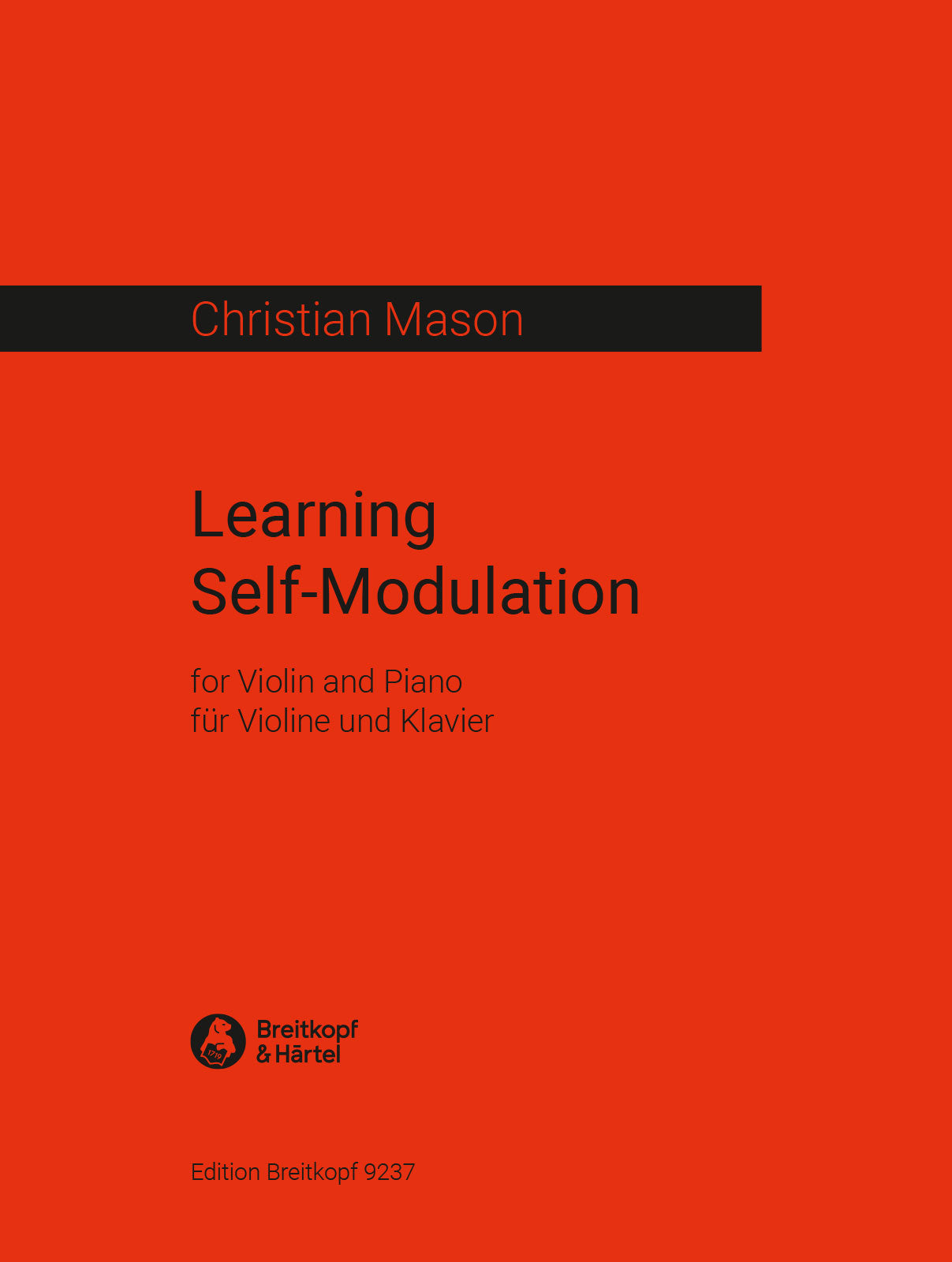Mason: Learning Self-Modulation
Expected to ship in 1-2 weeks.
- Composer: Christian Mason (1984-)
- Instrumentation: Piano, Violin
- Work: Learning Self-Modulation (2011)
- ISMN:
- Size: 9.1 x 12.0 inches
- Pages: 50
Listen on Soundcloud
Description
Learning Self-Modulation is a piece in which two musicians take us on a journey of transformation and shifting perspective. Rather than existing in opposition, the violin and piano are conceived as interlocking facets of the same identity, the shifting balance of their energies forming the musical drama of this piece. of course, their differences as instruments could hardly be greater – one so small the other so grand, not to mention playing techniques and sound qualities. It is through their varied interactions, and their aspiration to unity, that the music flows through many states of being towards integration and repose. Despite the changes of character and energy that we experience, the musical materials remain of the same substance, and at the harmonic level at least there is underlying unity across the work, with hints of modality and tonality emerging gradually from the midst of the initial chromaticism.
Poetically speaking, there is an evolution from a visceral, electrified 'thunderous night' into a calm, contemplative 'place of light'. Each of the six movements takes a subtitle from the following poem, which charts this journey:
- Dancing through the thunderous night
- Azure flashes falling
- Through suspended mists of white
- Seeking realms forever bright
- We hear the timeless calling
- and here at last, we flow like light
The notion of transformation is also embodied in the progressive de-tuning of the violin during the first four movements. Eventually, in the last two movements, this slightly de-tuned violin is replaced by a fully transformed scordatura violin, strung with four de-tuned G-strings. Once this sounds, we find ourselves in a new world...
Learning Self-Modulation is dedicated to Carolin Widmann whose generous and adventurous spirit was an inspiration to me throughout the time of composition.
(Christian Mason 2011)
Publishers use a lot of words to describe what they sell, and we know it can be confusing. We've tried to be as clear as possible to make sure you get exactly what you are looking for. Below are descriptions of the terms that we use to describe the various formats that music often comes in.
Choral Score
A score for vocalists that only contains the vocal lines. The instrumental parts are not there for reference. Generally, cheaper than a vocal score and requires multiple copies for purchase.
Facsimile
Reproductions of the original hand-written scores from the composer.
Full Score
For ensemble music, this indicates that the edition contains all parts on a single system (there are not separate parts for each player). In larger ensembles, this is for the conductor.
Hardcover
Hardbound. Generally either linen-covered or half-leather.
Orchestral Parts
Similar to a wind set, this is a collection of parts. In the case of strings, the numbers listed are the number of copies included, though generally these are available individually (often with minimum quantities required).
Paperback
When publishers offer multiple bindings (e.g. hardcover) or study scores, this is the "standard" version. If you're planning to play the music, this is probably what you want.
Performance / Playing Score
A score of the music containing all parts on one system, intended for players to share. There are not separate parts for each player.
Set of Parts
For ensemble music, this indicates that there are separate individual parts for each player.
Solo Part with Piano Reduction
For solo pieces with orchestra, this is a version that contains a piano reduction of the orchestra parts. For piano pieces, two copies are typically needed for performance.
Study Score
A small (think choral size) copy of the complete score meant for studying, and not playing. They make great add-ons when learning concertos and small chamber works.
Vocal Score
A score prepared for vocalists that includes the piano/organ part or a reduction of the instrumental parts.
Wind Set
For orchestral music, this is a collection of wind and percussion parts. The specific quantities of each instrument are notated.
With Audio
In addition to the printed music, the edition contains recordings of the pieces. This may be an included CD, or access to files on the internet.
With / Without Fingering (Markings)
Some publishers prepare two copies - a pure Urtext edition that includes no fingering (or bowing) suggestions and a lightly edited version that includes a minimal number of editorial markings.




